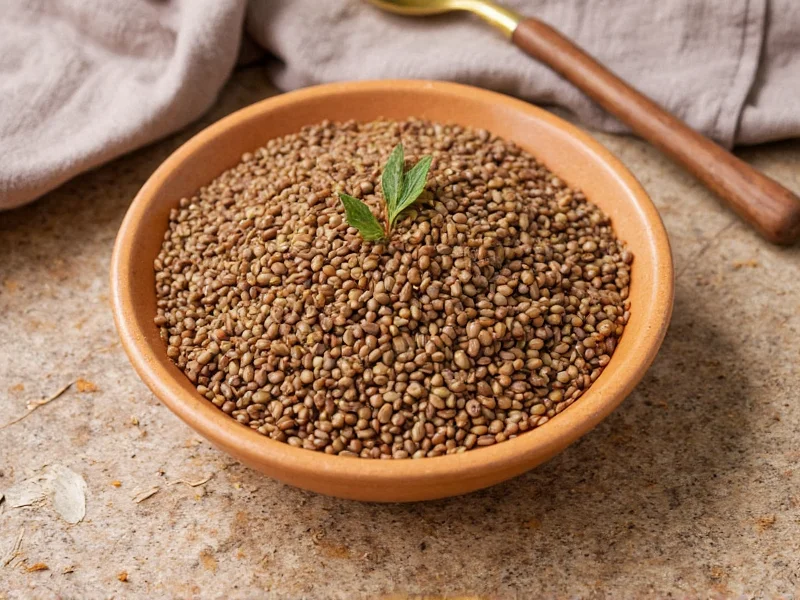Lentils stand out as a nutritional powerhouse in the legume family, particularly when it comes to dietary fiber content. Whether you're managing digestive health, controlling blood sugar levels, or simply aiming to meet your daily nutritional requirements, understanding the fiber profile of lentils provides valuable insight for making informed dietary choices.
How Much Fiber Do Lentils Actually Contain?
The fiber content in lentils varies slightly depending on the variety, but all types offer substantial amounts. Research from the USDA FoodData Central database confirms that cooked lentils consistently rank among the highest fiber-containing foods per serving. This makes them an exceptional choice for anyone looking to increase their fiber intake without resorting to supplements.
| Lentil Type | Fiber per 1 Cup (Cooked) | Fiber per 100g | % Daily Value |
|---|---|---|---|
| Brown Lentils | 15.6g | 8.0g | 56% |
| Green Lentils | 15.3g | 7.9g | 55% |
| Red Lentils | 15.8g | 8.1g | 57% |
| Black (Beluga) Lentils | 15.2g | 7.8g | 54% |
Types of Fiber Found in Lentils
Lentils contain both soluble and insoluble fiber, each offering distinct health benefits. Approximately 45% of lentil fiber is soluble, while 55% is insoluble. This balanced ratio contributes to their comprehensive digestive and metabolic benefits.
Soluble fiber in lentils forms a gel-like substance during digestion, which helps regulate blood sugar levels by slowing glucose absorption. This makes lentils particularly valuable for individuals managing diabetes or insulin resistance. The soluble fiber also binds with cholesterol particles, facilitating their elimination from the body and supporting cardiovascular health.
Insoluble fiber, the predominant type in lentils, adds bulk to stool and promotes regular bowel movements. This component acts as a natural broom for the digestive tract, reducing the risk of constipation and potentially lowering the risk of colorectal cancer. The insoluble fiber in lentils also serves as a prebiotic, feeding beneficial gut bacteria that support overall immune function.
Health Benefits of Lentil Fiber
The substantial fiber content in lentils delivers multiple evidence-based health benefits. Studies published in the American Journal of Clinical Nutrition demonstrate that regular lentil consumption correlates with improved digestive health, better weight management, and reduced risk of chronic diseases.
For digestive health, the dual-fiber profile in lentils creates an optimal environment for gut microbiota. Research shows that populations consuming high-fiber diets rich in legumes like lentils experience fewer digestive disorders and maintain healthier gut microbiomes. The fiber in lentils also increases satiety, helping control appetite and supporting healthy weight management without restrictive dieting.
When comparing lentils fiber content per 100g to other common foods, lentils outperform many alternatives. A cup of cooked lentils contains more than double the fiber of an equivalent serving of quinoa and significantly more than most whole grains. This makes lentils an efficient way to meet daily fiber requirements, especially for vegetarians and vegans seeking plant-based nutrition.
Practical Ways to Incorporate High-Fiber Lentils
Adding lentils to your diet doesn't require dramatic changes to your eating habits. Start with these simple strategies to boost your fiber intake:
- Replace half the ground meat in burgers or meatloaf with cooked lentils
- Add cooked lentils to soups and stews for extra texture and nutrition
- Create lentil-based salads with vegetables and light vinaigrette
- Use pureed lentils as a base for vegetarian patties or fritters
- Substitute lentils for rice in pilafs and grain bowls
When increasing your fiber intake, remember to do so gradually while increasing water consumption. This approach prevents potential digestive discomfort as your system adjusts to higher fiber levels. Most adults should aim for 25-38 grams of fiber daily, and just one serving of lentils provides more than half this requirement.
How Lentils Compare to Other Fiber Sources
When evaluating whether lentils are high in fiber compared to alternatives, the data shows lentils consistently rank among the top plant-based fiber sources. While beans generally contain similar fiber levels, lentils have the advantage of requiring no presoaking and cooking more quickly.
Compared to whole grains, lentils typically offer 2-3 times more fiber per serving. For example, a cup of cooked quinoa contains about 5 grams of fiber, while the same amount of lentils provides over 15 grams. Even compared to other high-fiber vegetables like broccoli or Brussels sprouts, lentils deliver significantly more fiber per calorie.
The unique combination of high protein and high fiber in lentils creates a nutritional profile that supports sustained energy release throughout the day. This makes lentils particularly valuable for athletes, busy professionals, and anyone seeking stable blood sugar levels without energy crashes.











 浙公网安备
33010002000092号
浙公网安备
33010002000092号 浙B2-20120091-4
浙B2-20120091-4